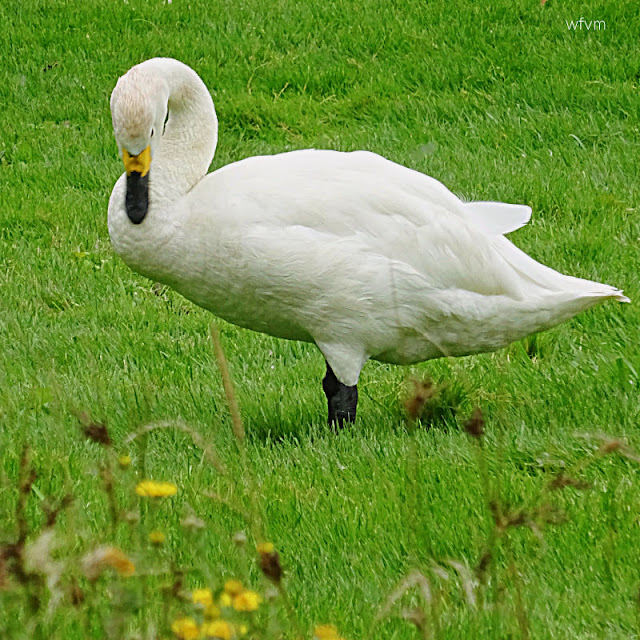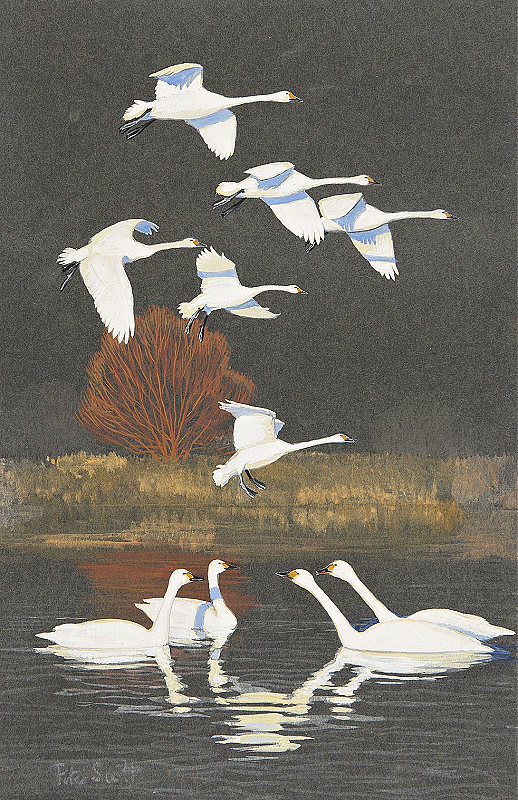We have just returned home from North Yorkshire feeling refreshed and invigorated having neither seen nor heard any worldwide news during the entire time that we were away.
Saturday, 25 September 2021
The White Rose County
Tuesday, 7 September 2021
Mainly Birds Part 2
Early in the morning the following day we visited Slimbridge WWT founded by Sir Peter Scott, only child of Antartic explorer Robert Falcon Scott.
Saturday, 4 September 2021
Mainly Flowers - Part 1
When youngest son and his wife came to stay we spent most of our time out of doors, "birding". Our son is a teacher and an artist who loves nothing better that being out walking in the countryside spotting birds and animals which feature on 99% of his linocut prints.
The first day we set off along our local canal in the valley below where we live with high hopes of spotting a Kingfisher.
But by late autumn/winter, and once the cygnets have turned white, their parents will drive them off to search for their own breeding territory somewhere other than on their canal.
You can't go far in this country without a Robin - Erithacus rubecula putting in a friendly appearance.
There was plenty of this orange Balsam Impatiens capensis growing along the edge of the water, and although it is very pretty, rather like its bigger cousin, the Himalayan Balsam, it is a threat to our native plants. Their popping seedpots catapult their seeds far and wide. Both plants were brought into the country by Victorian plant hunters who didn't realise the consquences of their actions. There was an abundance of Teasels - Dipsacus fullonum growing along the edge of the canal, and I began to wish that I had picked some as they could look really stunning in a stoneware studio vase. However, their seeds are greatly loved by several birds, especial the goldfinchs, so best to leave them where they are.Hemp-Agrimony - Eupatorium cannabinum, its dense flower heads have protruding stamens. Surprisingly this plant is not related to Hemp or Agrimony. It's flowers are pollinated by bees, but it is also greatly loved by moths and butterflies too.Thursday, 2 September 2021
This Week I had a.......
birthday. Why do they keep turning up so quickly? As a child they took forever to arrive.
We went out during the morning and on our return home found that a long cardboard box had been delivered to our porch. It was very shallow, only about 3cms deep. I opened it and found that it was full of flattened, crushed fresh flowers. Inside was a note which read "hush, we are sleeping - please wake us up gently by following the instructions, and by tomorrow we will have awakened" !!!
And thus they did.
1. I love the Foxglove illustration - it is one of my favourite wildflowers.
2.The paper is made from 100﹪ recycled materials.
3. It is compostable.
4.The card is embedded with lots of seeds which includes eleven different wildflowers.
5.Wildflowers are good for bees, and good for us.
In the Spring I need to moisten it, and cover it over with a layer of compost keeping it inside until the seeds germinate. Once the seeds are established it can go outside in a sunny spot - watch this space to see what happens next year.
For a special treat we visited a lovely garden lying at the foot of the beautiful Malvern Hills. It was really lush and colourful, we loved it. I will show more of it another time.
Afterwards we had a date at a charming hotel built during 1904 in the fashionable Arts & Crafts style prevelant during that period.Here we enjoyed a delicious Champagne and High Tea treat.
When we finally departed from the hotel we were pleased that we had eaten just a light snack for our lunch.






































